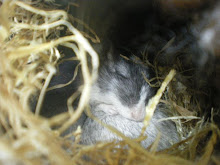
I love its silent presence. Its leaves have a very gentle and subtle atmosphere swaying in the wind. When I see that, a refreshing cool breeze blows in my mind. The gentle breeze blows off the stress from my everyday life and I find peaceful tranquillity within me.
This Asparagus is "Asparagus Plumosus," also commonly called "Asparagus Fern" and "Lace Fern," although it is not fern. It is Liliaceae and related to Asparagus that we eat. The young stems look like a skinny version of the vegetable asparagus. I have bitten the stem and it tasted like a plant with a hint of asparagus. (Eating lots of them may be harmful, so BE CAREFUL.)
Asparagus Plumosus is evergreen and a hardy perennial plant, so it is very suitable for Kokedama Bonsai. Also it will be your eye entertainer throughout a year.





